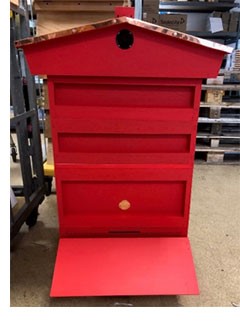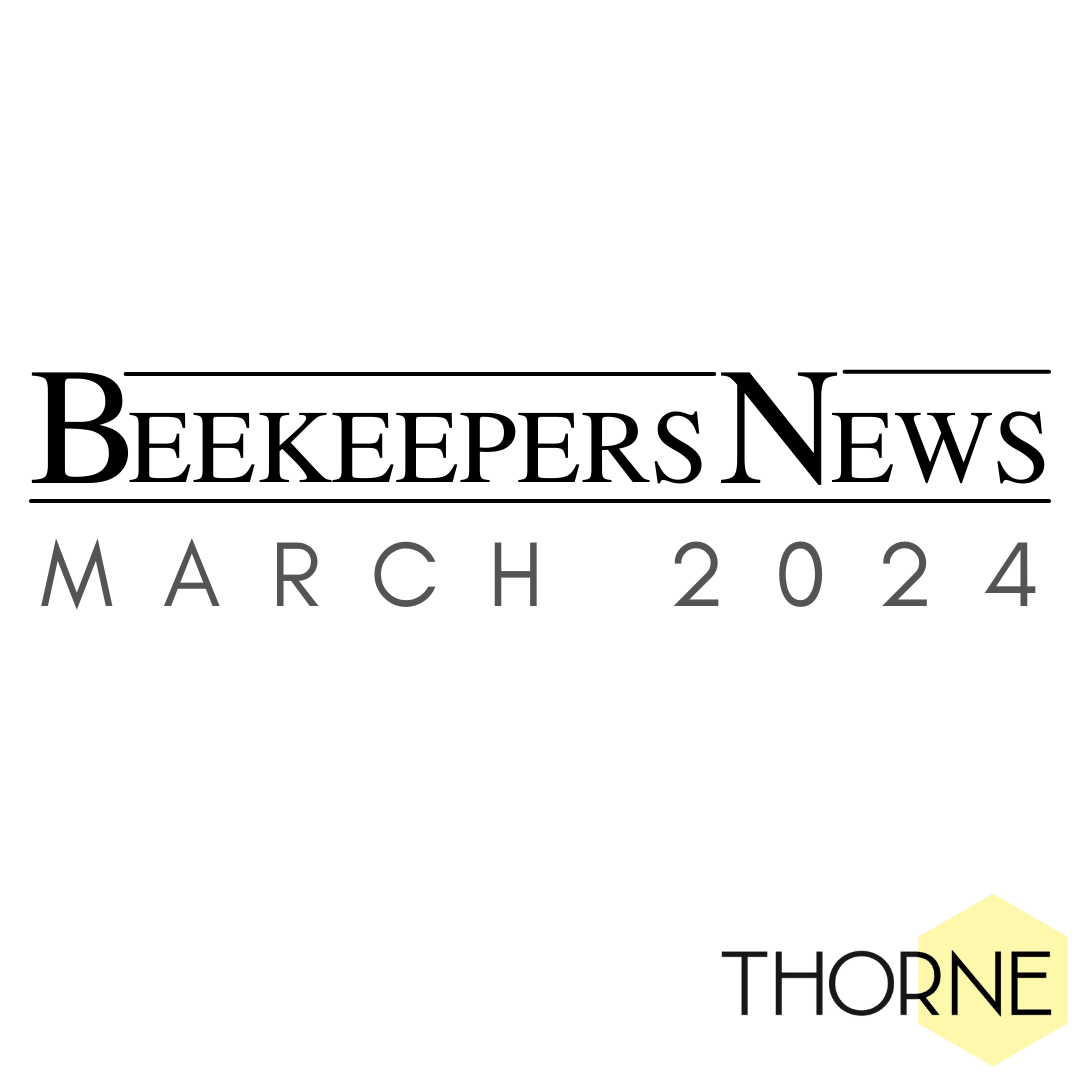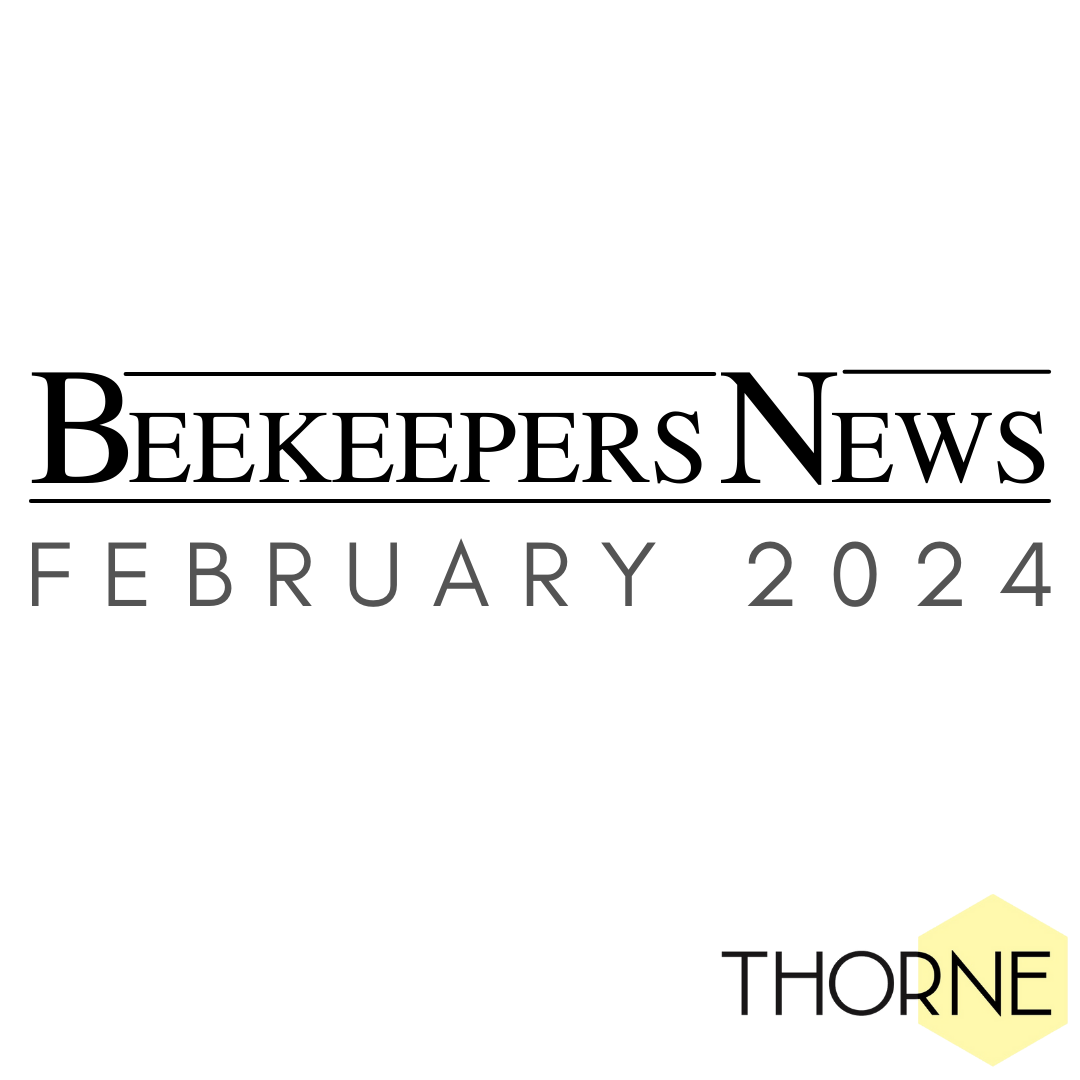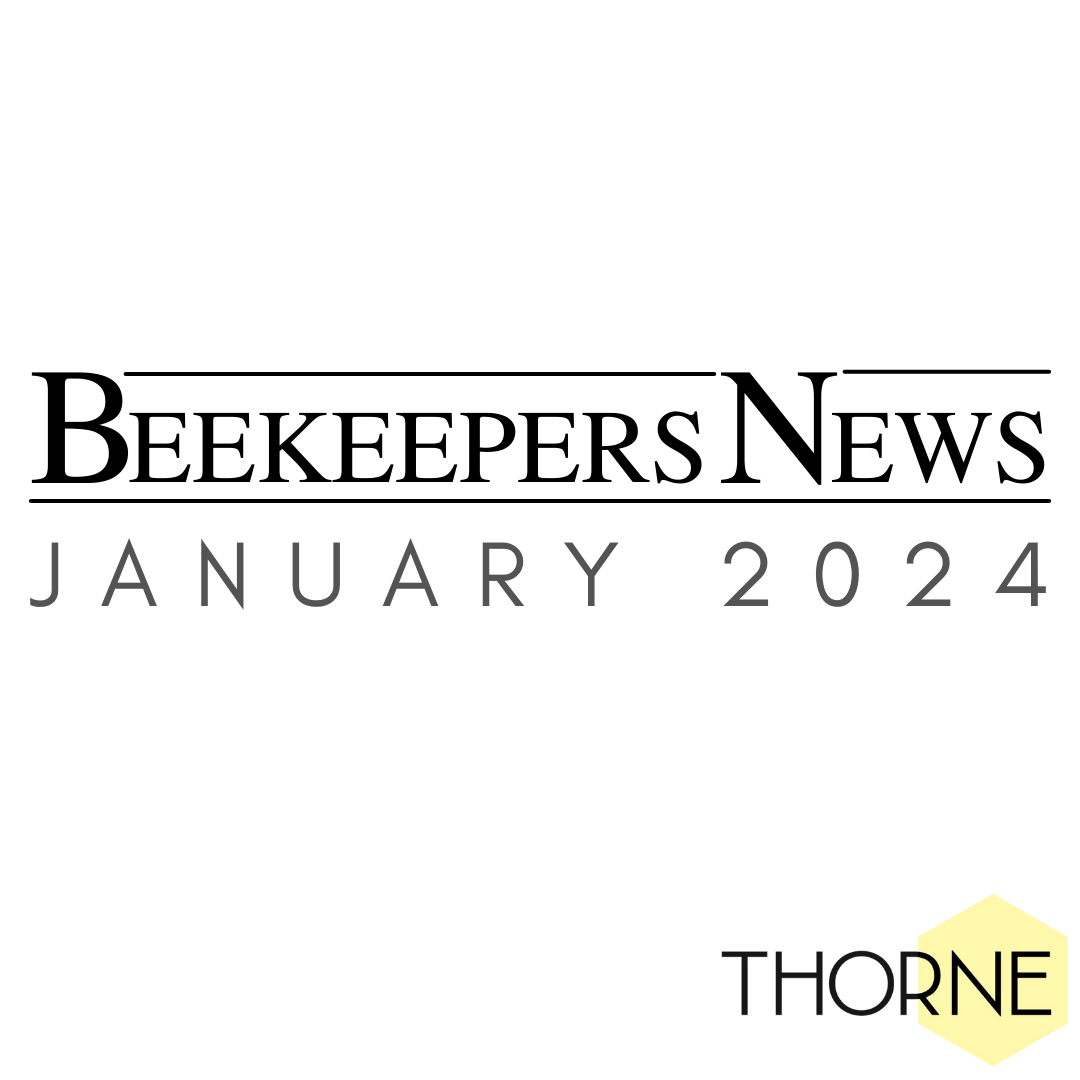May Roundup
What can we say about May 2019? The vast majority of our customers report that their bees are exceeding all expectations and gathering nectar and pollen in abundance. Swarming season is certainly well underway and is set to last at least a few more weeks. Orders have been flooding in and we are working 7 days a week to get your orders out to you just as quickly as we can.
Will we have the June gap? Let’s wait and see. There is bound to be a shortage of forage in parts of the country so please keep an eye on your bees. They can consume food incredibly quickly when the colonies are so large.
This month’s newsletter does not include an ‘Ask the Expert’ section. The expert is very busy with beekeeping at the moment. Therefore, we have decided to include a piece from a few years ago about the manufacture of our smokers. We are the only Beekeeping manufacturer in the UK to make our own smokers and have been doing so for many decades. We hope you find it interesting.
We are also stocking a budget range of stainless steel and galvanised smokers. More information can be found in the newsletter.
Equiptment Focus
This month’s equipment focus is our range of Hive Protection.
Premium Beehive Paint
Made exclusively for Thornes in the UK, our range of paints have been specifically formulated for beehives. It is very hard wearing and has excellent adhesion qualities. The VOC content (solvents that are released as paint dries) is less than 0.1%. It is easy to clean, repels water and doesn’t require a primer or undercoat.
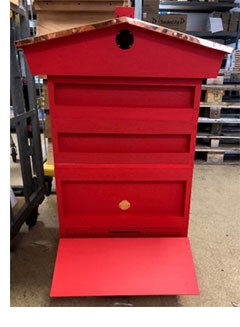
The paint is weather resistant in 2 hours. Available in 500ml tins in vibrant red, blue, yellow green and white at £21.60.
We can also supply our hives ready painted using this excellent product. Here is a red hive with a copper roof that we supplied just last week.
Safe-way Wood Stain and Treatment
From the same manufacturers as the paint, this UK made wood stain is proving very popular. In a range of fabulous colours, it offers great protection for all wooden hives. The drying time is very rapid, between 1 and 2 hours. It is 100% chemical free and the semi-transparent nature means the beautiful wood grain is clearly visible.
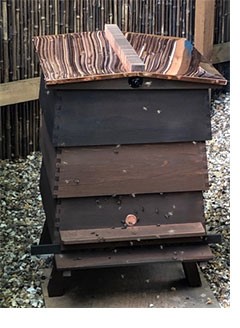
We will also stain your new beehive for you. Here is a WBC hive stained in oak in situ in our customer’s apiary.

UK made Smokers
Our Empire range of smokers are available in either copper, stainless steel or galvanised metal, standard or large, with or without a cage. So we have quite a variety available. (We also stock an electric smoker, budget stainless steel and galvanised smokers and of course the very popular Dadant smoker from America).
Copper is the most difficult metal to work with. Being soft and extremely pliable, any marks or dents are obvious, so our engineers have to be extremely skilled and careful during the whole manufacturing process.
The first step is to cut all the parts out by using a 40 tonnes power press. This includes the nozzle, rim, body, bottom, air pipe and hinge. The lids are made first and the knob attached.
Next step is to make the smoker body, ensuring it fits with the corresponding lid. The edges are bent slightly before they are hammered down to make the edge. The body is then manually shaped into a cylinder before the edge is hammered to make a smoke and air tight seam.
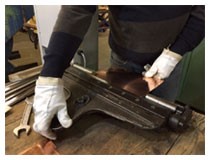
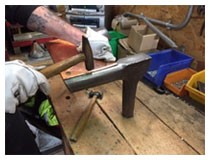
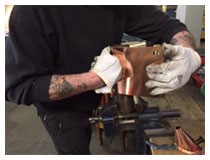
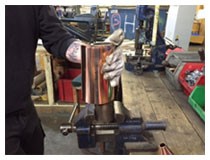
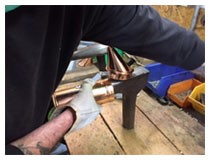
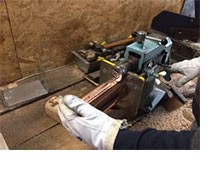
A swager tool is used to make the edge at the top – to stop the lid slipping off.
Next, it’s the bottom of the smoker. First, the edges are trimmed and then the outside is crimped. It is then carefully pushed into position, hammered into place and sealed.
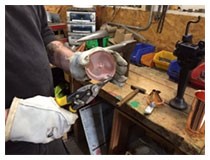
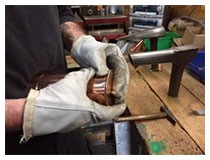
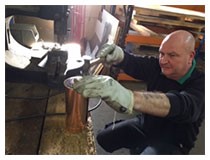
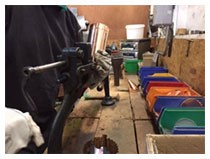
Next we attach the lid and bellow brackets using rivets.
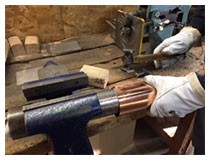
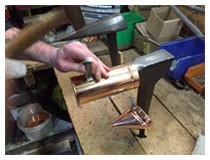
Finally, the bellows are attached and there you have it – one standard copper smoker, ready for sale at £50.20. Mark and Alex can make approximately 15 to 20 smokers per day.
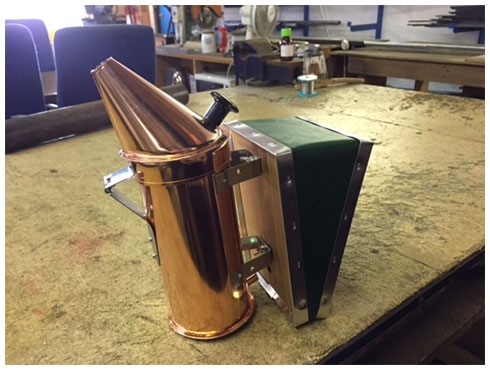
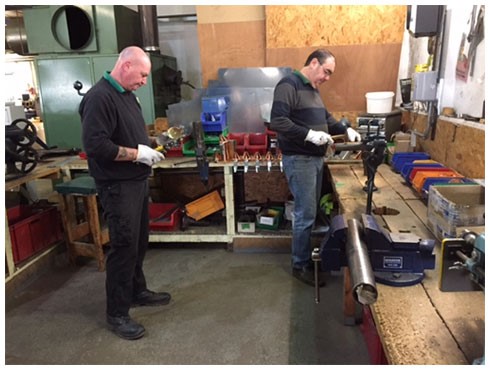
Budget Smokers
We think our UK made smokers are the very best in the world but choice is everything, so we also recently introduced a range of budget smokers.
Both the budget stainless steel and galvanised smokers are well made and will last several years. A large firebox with a removable grid and plywood and leather cloth bellowsComplete with heat shields and a convenient hanging hookThese smokers are a bargain!
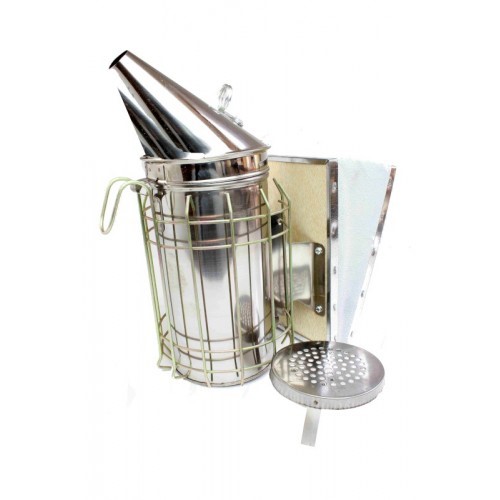
Stainless Steel Smoker £17.50
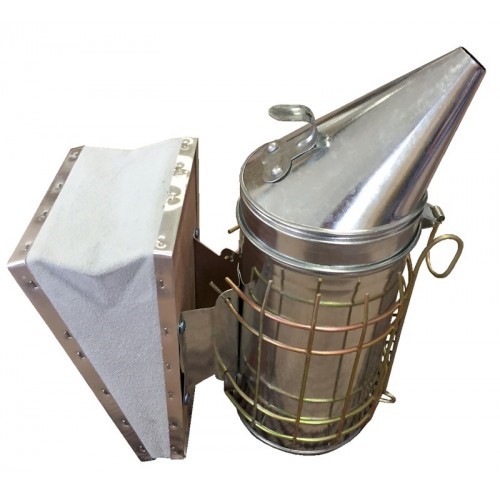
Galvanised Smoker £10.00
Beekeeping Blog
May 2019
May has been a very busy beekeeping month. As many predicted at the end of last season, there have been quite a few swarms this year. However, we have mostly been able to keep this at bay by performing artificial swarms early enough in the season so the bees’ impulse to swarm is reduced if not eliminated. This saves losing bees and also saves precious time at this busy point in the beekeeping calendar.
However, it is not just us who have been frantic this month; the bees have also been extremely busy, bringing in huge quantities of nectar and pollen. From this photo, you can see a wide range of colours of pollen, which gives you an indication of the variety of plants they are foraging on. This frame is particularly impressive with its range of colours from yellows to reds to greens – amazing stuff!
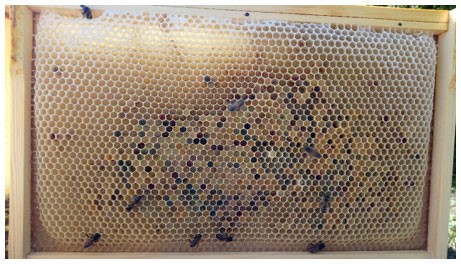
We have also been raising some queens this year. This operation has allowed us to increase our stocks and extra queens are always handy to have as insurance. If you look closely, you may see some of the queens in these hair roller cages. The queen cell at the bottom is a good example of one that has hatched, as you can see the bottom of it has been opened like a little flap.
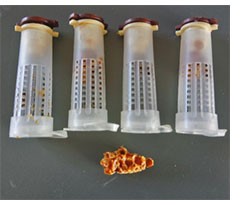
Using the Quintrex cage, we have managed to successfully introduce several of these queens into nucs which we hope will go onto be big, strong colonies. These work by attaching the cage onto the comb where there is sealed, emerging brood, and of course, making sure the queen is placed in there. The newly emerged brood readily accept her as their queen and her pheromones distribute around the colony through the mesh. This means that after a couple of days or so, the bees that were already in the nucleus when she was introduced will now accept her as their queen, rather than killing her as an intruder (which is definitely NOT what you want!).
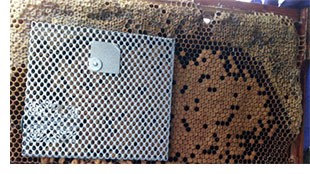
Next month we will be busy consolidating what we have achieved in May and hopefully we will not be doing too much more in the way of swarm control. Fingers crossed!
Disease Focus
Acarine
Acarine disease is the infestation of the breathing tubes of adult bees by the parasitic mite Acarapis Woodi. In the UK, Acarine is not usually a serious disease, with relatively small numbers of colonies being affected. Symptoms usually appear in early spring, when the colony slowly starts to dwindle.
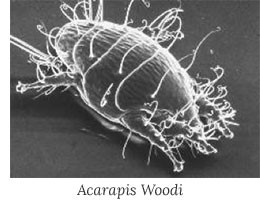
History
It is thought that Acarapis Woodi was a major contributory factor to the ‘Isle of Wight disease’ (now called Acarine), first seen in the early 1900s. It decimated the honey bee population, later spreading to mainland UK.
Cause
Mites lay their eggs in the bees’ trachea and upon hatching the larvae begin to feed on the haemolymph of the bee. The larvae undergo several moults before reaching their adult forms and are then ready to infect new hosts.
Symptoms
The symptoms can be varied. The infection affects the honey bee’s capacity to breathe, it opens the tracheal surface to pathogens and reduces the capacity of air flow to the wing muscles. This results in weakened and sick honey bees who do not work as hard and have a significantly reduced lifespan.
Bees may cluster in front of the hive, appearing confused and disorientated, unable to return to the hive. Large numbers of bees may be seen crawling up stems of grass in front of the hive but this is typical of other paralysis viruses too. Some bees may also display ‘K-wings’, where the rows of hooks holding the pairs of the bee’s wings together become detached. However, these abnormalities are not always seen and can be due to other factors not linked to Acarine.
Spread
Beekeepers can spread these mites through their apiaries through normal management practices including the movement of infected colonies and bees between hives and apiaries. Infected bees can disperse the mites long distances if they hitchhike on clothes, equipment and vehicles. The mites can also spread easily when colonies are in close proximity to each other, such as in a winter cluster and this can contribute to heavy winter losses. Always be aware of any unusually high winter losses.
Diagnosis
The disease can only be diagnosed by carrying out dissection and microscopic examination. In a healthy bee, the trachea will have a uniform, creamy-white appearance. The trachea of infested bees will show patchy discolouration or dark staining. In the photo below to the left, the healthy trachea is on the left side of the image, the infested trachea on the right. In addition, the eggs, nymphs and adult stages of the mite may also be seen in the trachea (photograph below right shows eggs).
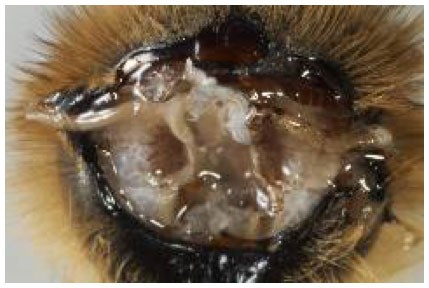
Right side trachea infested and discoloured
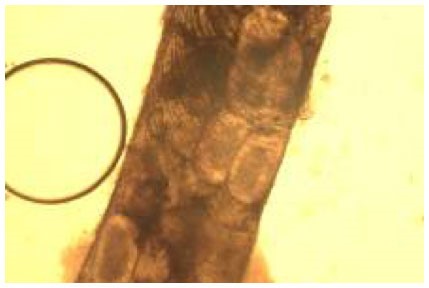
Eggs visible in trachea
Treatment
There are currently no approved treatments for Acarine. The best method of control is to re-queen colonies that are susceptible to the disease.
Bees for Development Update
Visitors from India
Bees for Development is delighted to welcome our Commonwealth Professional Fellows from India, Shiny Rehel and Dhanshree Patel. Shiny works as the Programme Coordinator for the Biodiversity Management and Restoration team at Keystone Foundation, Tamil Nadu, India.
“We work to enhance the quality of life for communities who depend on the native bee species of the Nilgiris such as Apis dorsata, Apis cerana, Apis florea and Trigona sp. for their livelihoods” Shiny

Dhanshree Chavan is Program Officer for the organisation Under The Mango Tree, Mumbai, India. She is part of the Bees for Poverty Reduction Programme and is committed to promoting low-cost beekeeping with indigenous bees amongst marginal Indian farmers.
The income they earn from beekeeping is vital, contributing towards improved nutrition, health and educational outcomes for their families. Bees being excellent pollinators also contribute to improving agricultural yields.
“The Commonwealth Professional Fellowship at Bees for Development is an opportunity for me to learn more about programme monitoring and evaluation. This learning experience at Bees for Development will significantly contribute to sustainable development in my home country” Dhanshree
You can meet both Shiny and Dhanshree at The Bee Garden Party on 12th of June when you will be able to sample honey from Apis dorsata and Apis cerana honey bees.
Join us for a wonderful summer celebration of bees
Bees for Development have organised a brilliant Bee Garden Party on the 12th of June. Join us along with some very special guests in the private gardens of Marlborough House, London. There'll be Champagne, food and entertainment to keep you buzzing all evening!
Martha Kearney will host, talking to bee-lovers from all walks of life including Mary Berry, top chefs and authors, while Bill Turnbull will auction star prizes including holidays and bee-filled experiences. To mention just one of the dozens of amazing prizes on offer: a two-week BEEspoke Australian Bee Adventure for two people, hosted by Beechworth Honey, including flights to Melbourne.
There is still time to bid for the chance to own a unique piece of Bee ArtThe Bee Art Auction - started on World Bee day (20 May) and will end on the evening of the Bee Garden Party on 12 June 2019Artists and celebrities from across the media have created wonderful bee art and bee doodles on postcards, with their signature on the back of the card – though sometimes with a clue on the front! Can you guess who is the artist of each picture?
Contributing artists and ‘doodlers’ already include Judi Dench, Antony Gormley, Kate Humble, Alexander Armstrong, Andrew Marr, Ian McKellen, Alison Steadman, Rachel Whiteread – with more contributions arriving every day.
Click here to go to the Bee Art Auction on the Bee Garden Party website.
National Honey Show News
The next stage in preparation for this year’s National Honey Show is happening all around us as we move through the seasons with the blossoms and bees working on the new honey crop and the resulting entries for the show in the autumn.
The lecture programme is in place. Members and day visitors can attend any of our main lectures, the Friday Bee Craft lectures or the Saturday new-to-beekeeping lectures on a first come first served basis.
Any local beekeeping association newsletter editors reading this can sign up for our newsletter, sent out about twice a year. A link to the latest copy and PDF's of the leaflets can be found below. You can request paper copies of leaflets by emailing Val: publicity@honeyshow.co.uk
Newsletter editors please also think about selecting your best issues for our new entry class for 2019:
Branch or Association Newsletter. Three latest editions of a branch or association newsletter, to be submitted in electronic format.
Any teachers, Scout, Guide or those with similar links to a younger audience, do encourage engagement with the Show. We have exciting classes for junior entries and would welcome a larger display from our creative younger generation at the show. For example 141. Any Artistic, Decorative, Interesting or Instructive Exhibit, relating to Bees or Beekeeping – more details in the Schedule and the ‘Activities for Younger Beekeepers’ leaflet to be found at the link above.
We’ll look forward to seeing newsletters, junior entries, and all visitors at the next show in October.
National Honey Show Thursday 24th to Saturday 26th October 2019 at Sandown Park Racecourse, Esher, Surrey KT10 9RT.
Upcoming Events
Bees for Development Garden Party – 12th June


